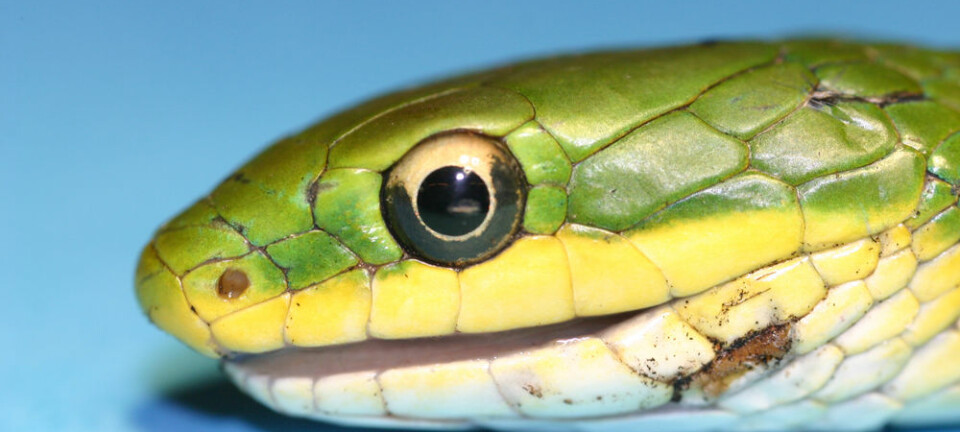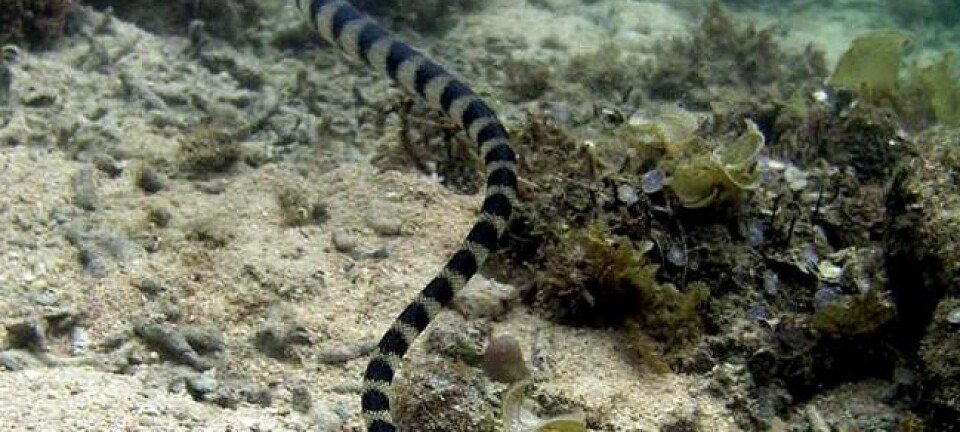
Scientists rediscover extinct sea snakes
A team of scientists from Australia and Denmark have rediscovered two species of sea snakes that were though to have been extinct since 2001.
Some 600 kilometres off the North-west coast Australia, in the Timor Sea, lies Ashmore Reef. The reef has been nicknamed "the sea snake capital of the planet' because it renowned for its large number of -- well, you’ve guessed it, sea snakes.
But in the late 1990s something happened. The sea snakes vanished and two species in particular, both of which only lived in the vicinity of the Ashmore Reef, were considered extinct since 2001.
That is, until a team of Australian and Danish scientists rediscovered whole populations of both sea snakes, the short-nosed sea snake (Aipysurus apraefrontalis) and the leaf-scaled sea snake (Aipysurus foliosquama), off the north Australian coast.
"It was always thought that these two species only lived in the area around Ashmore Reef. But we've now found populations of these snakes a 35-hour trip from where we thought they lived -- that makes you happy," says Arne Redsted Rasmussen, an assistant professor at the School of Conservation at the Royal Danish Academy of Fine Arts.
“It means that we have 'rediscovered an extinct species' so to speak,” says Rasmussen, who is known as the man who catches sea snakes with his bare hands.
The new discovery has just been published in the journal PLOS One.
Mystery of the disappearing sea snakes
In the study, the scientists analysed the DNA of snakes collected off the North Australian coast -- far away from Ashmore Reef.
"The snakes have previously been found elsewhere, but until now, scientists have belived that the snakes had gone astray because of storms and strong currents," says Rasmussen.
Rasmussen has previously attempted to find the vanished species off Ashmore Reef. He went hunting for the snakes in 2012 as well as 2013, but to no avail.
"We could see, for instance, that sea turtles were living in the best of health in the same area. But the sea snakes were not happy, and we don't know why. Was it due to human activity? Had new predators arrived which eat the sea snakes' fare? No indication of that. We simply have no idea why they vanished," says Rasmussen.
He is currently examining whether sea snakes are particularly susceptible to noise, which is one possible reason for their disappearance.
New habitat, new problems
The rediscovery of the two species of sea snake tells us that life as a sea snake in North Australian waters may be under threat from human activity.
"We're concerned about these species of snake. Australia is exploiting their resources to an ever-greater extent. There is a lot of oil drilling near the coast as well as increased fishing. How long can the snakes survive off the coast before man gets in the way?" says Rasmussen.
He believes it is vital to avoid the extinction of species caused by the impact of human activity.
"When a species becomes extinct, that's it. Coming generations won't have the opportunity to experience them, but most important of all, the species influence their surroundings. These two species help keep the reef healthy -- for one thing they catch sick fish so that only the fit fish survive to pass on their genes,"
---------------
Read the original story in Danish on Videnskab.dk
Translated by: Hugh Matthews









